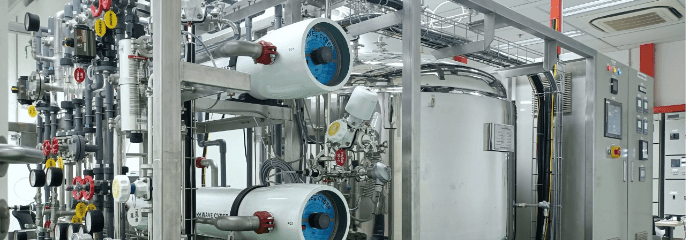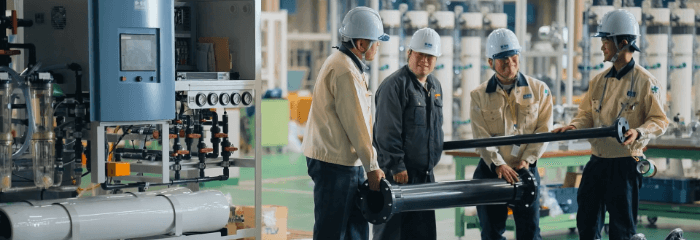On February 28, 2025, the Ministry of Natural Resources and Environment issued Circular No. 06/2025/TT-BTNMT, promulgating the National Technical Regulation on Industrial Wastewater (QCVN 40:2025/BTNMT). This regulation will officially take effect on September 1, 2025, replacing a series of separate regulations previously in force, including QCVN 40:2011/BTNMT on industrial wastewater, QCVN 22:2009/BTNMT on wastewater from thermal power plants, QCVN 28:2010/BTNMT on medical wastewater, QCVN 11:2015/BTNMT on wastewater from seafood processing, QCVN 12:2015/BTNMT on cassava starch processing, and several other sectoral standards.
Compared with the previous regulation, QCVN 40:2025/BTNMT introduces significant changes. The number of monitoring parameters has increased from 33 to 61, with the addition of new indicators such as dioxin/furan, microplastics, AOX, TOC, persistent organic pollutants, as well as specific groups of pesticides and heavy metals. These updates reflect the government’s effort to better control emerging pollutants and align environmental standards with international practices.

Image credit: Unsplash
For the thermal power sector, the new regulation replaces QCVN 22:2009/BTNMT, tightening requirements on discharge temperature, suspended solids, total dissolved solids, heavy metals such as mercury, arsenic, lead, and selenium, along with sulfates, fluorides, mineral oils, and phenols. Large-scale plants with high discharge volumes will be required to install automatic monitoring systems for continuous tracking of wastewater quality.
In the electronics and semiconductor industry, wastewater generated mainly from etching, electroplating, and wafer cleaning processes often contains high concentrations of heavy metals such as chromium, nickel, copper, zinc, and lead, as well as organic solvents and AOX compounds. These pollutants are highly toxic and difficult to treat, and the new regulation requires enterprises to adopt advanced treatment technologies in order to comply with stricter discharge limits.
The pharmaceutical sector will also be significantly affected, as QCVN 40:2025/BTNMT replaces the previous split monitoring regime under medical and industrial wastewater standards. Wastewater from pharmaceutical production typically contains high COD, BOD, AOX, nitrogen, phosphorus, and particularly residual antibiotics and hormones. The inclusion of pharmaceutical residues as mandatory monitoring parameters is considered essential to mitigate the risk of antimicrobial resistance in the natural environment.

Image credit: Organo Corporation
In the food and beverage industry, wastewater is often characterized by high organic load, with large amounts of BOD, COD, suspended solids, animal and vegetable oils, nitrogen, and phosphorus, which can easily cause eutrophication and reduce dissolved oxygen in receiving waters. The individual regulations that previously applied to seafood processing, cassava starch, or brewing and beverage production are now consolidated under QCVN 40:2025/BTNMT.
For precision engineering and metalworking, wastewater is generated from plating, cleaning, and machining processes, and typically contains heavy metals such as chromium, nickel, zinc, copper, lead, cadmium, mineral oils, and sometimes cyanide. These substances are highly toxic and have long-term bioaccumulative effects. The new regulation further lowers allowable thresholds for heavy metals to minimize environmental risks.
As for hazardous wastewater generated by industries such as chemical production, pesticide manufacturing, textile dyeing, and recycling, QCVN 40:2025/BTNMT introduces new monitoring requirements for persistent organic pollutants, dioxins/furans, POPs, chlorinated solvents, microplastics, and phenols. These substances, not comprehensively addressed in QCVN 40:2011/BTNMT, pose serious risks of pollution, even across borders.
According to the implementation roadmap, from September 1, 2025, all new projects, expansions, or projects undergoing revisions to their environmental impact assessment reports must comply with QCVN 40:2025/BTNMT. Existing facilities may continue to apply the old standards until December 31, 2031. From January 1, 2032, all production facilities nationwide will be required to fully comply with QCVN 40:2025/BTNMT.
The consolidation of multiple separate regulations into a single unified framework is expected to make compliance more straightforward for enterprises, while at the same time creating pressure on high-pollution industries such as thermal power, semiconductors, pharmaceuticals, and chemicals to upgrade their wastewater treatment systems and install automatic monitoring equipment. QCVN 40:2025/BTNMT is not only a legal instrument for pollution control but also a driver for industries to accelerate their transition toward green and sustainable development in the coming years.
Organo (Vietnam) is proud to be a trusted partner in the water treatment industry. For inquiries and cooperation, please contact us for prompt and professional support.




